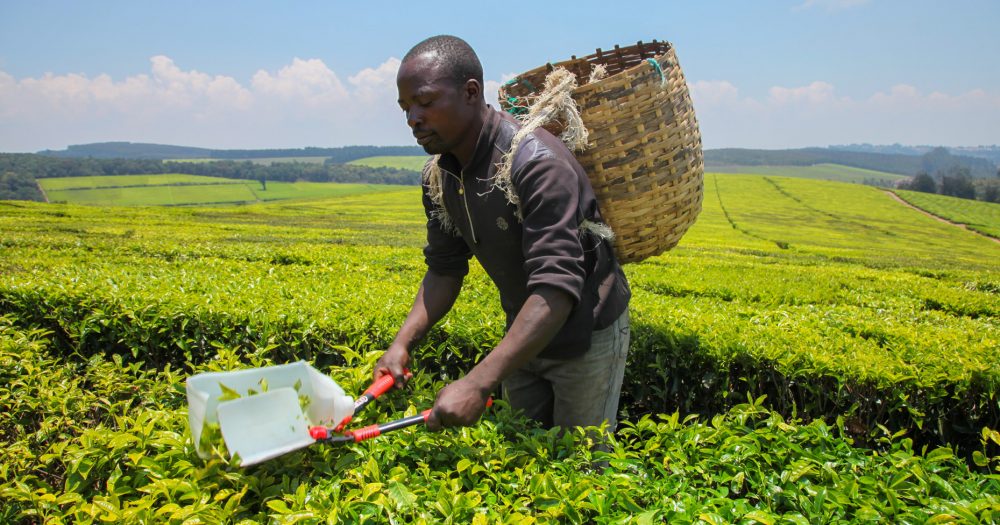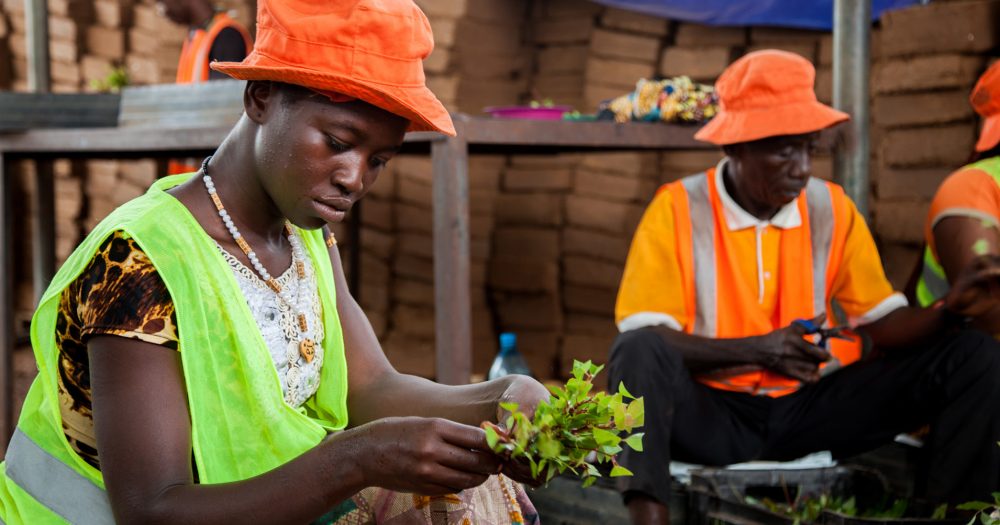Our investment
Description of the investment.
Description of the investment.
Investing through AWID, we aim to improve the availability, reliability and quality of water for end consumers and businesses with the ultimate goal of strengthening African countries’ resilience to climate change.
AWID will also aim to reduce the environmental footprint of water infrastructure projects by integrating green technologies and alternative energy components. We intend to support a developmental strategy that will eventually mobilise long-term commercial investment into the sector, which has historically suffered from a lack of investment and operational inefficiencies.
We will support AWID to focus on developing, investing, and operating greenfield water and sanitation projects as well as seek out potential concessions with significant operational improvement across Africa.
Impact information
Applies to investments made from 2019 onwards. The tabs in this section define what we expect to achieve through the investment, assessing the potential impact of the investment against six dimensions of impact. You can find more details on our methodology of assessing impact here.
Applies to investments made from 2019 onwards. The tabs in this section define what we expect to achieve through the investment, assessing the potential impact of the investment against six dimensions of impact. You can find more details on our methodology of assessing impact here.
What?
| Impact |
|---|
Improve access to safe and affordable drinking water; reduce deaths and illnesses from waterborne diseases (SDGs 6.1, 3.3). Treat wastewater to increase water use efficiency through recycling and safe water reuse; reduce the number of people suffering from water scarcity; strengthen resilience and adaptive capacity against climate related shocks (SDGs 6.4, 13.1). Deliver outsized benefits to women and girls (SDG 5) who are disproportionately affected by time-consuming tasks such as fetching water or by the inadequate design of sanitation and hygiene facilities and services in their communities. Support Africa’s agricultural sector through improved irrigation which will help boost food security (SDG 2) |
|
|
How?
| Primary | Secondary |
|---|---|
|
|
Who?
| Stakeholder | Geography | Characteristics |
|---|---|---|
| Consumers |
Egypt, Rwanda, Pan-African |
Urban/peri urban consumers. The Kigali project will qualify under the 2X Challenge. |
| Planet |
Africa is the most vulnerable continent to the adverse effects of climate change due to its low adaptive capacity. |
How much?
| Scale | Depth/Duration |
|---|---|
|
Egypt: Provide 22,000 m3 /day of water to 60+ hotels Rwanda: Provide 40,000 m3 of treated water/day (equivalent to a third of the city’s total supply) to 500k domestic, commercial, and industrial consumers. |
Impact is expected to be deep; consumers (especially women and girls) suffering from unreliable or limited access to water and high levels of poverty will benefit most from improved access to clean and safe water. Impact is expected to be deep provided that AWID integrates climate considerations into the development, construction and operation of water assets financed under the joint venture, to demonstrate the viability of low carbon and climate resilient water services. |
Contribution/additionality
| Contribution/additionality |
|---|
|
Risk
Execution Risk
Alignment Risk
|
Impact score
|
Impact score (at point of investment)
The Impact Score is a tool to help us manage our performance against our strategic impact objectives. It is designed to incentivise investments that support our productive, sustainable, and inclusive objectives. You can find out more here. The Impact Score is published for investments made from 2022 onwards. The Impact Scores are calculated at the point of investment. We publish the Impact Scores of new investments annually, once the information has been externally assured by an independent third party. |
|---|
7 |
Environmental and social information
-
Environmental and social summary
A high-level description of the environmental and social aspects of the investment. This may include a summary of key environmental and social risks identified during environmental and social due diligence (ESDD); key elements of an environmental and social action plan (ESAP); or ways in which we plan to support the investee improve environmental and social standards, such as through their environmental and social management system (ESMS); as well as any other priority areas agreed with the investee.
-
Environmental and social risk
A risk category rating, which indicates the level of environmental and social risk associated with an investment. For an explanation of the categorisations used, see here. We consistently provide an environmental and social risk category for all investments screened from 2023 onwards.
Environmental and social summary
We agreed an ESAP focused on the development and implementation of an ESMS and HR management system, as well as monitoring and management of community and biodiversity impacts, assessment of physical climate risks and development of adaptation plans.
Environmental and social risk
Medium-High
Reporting and Complaints Mechanism
The Reporting and Complaints Mechanism allows anyone outside BII to report alleged breaches of the business integrity or environmental and social provisions of BII’s Policy on Responsible Investing. This includes breaches made by BII, a BII investee, or a portfolio company of a fund in which BII has invested. The Reporting and Complaints Mechanism Rules are available here. Reports and complaints can be submitted by email to reportsandcomplaints@bii.co.uk or by mail. See more details on our Reporting and Complaints Mechanism here.
For any other general enquiries contact us at enquiries@bii.co.uk
-
Key facts
- First published
:
When the investment was first published on the website database.
- December 2022
- Last updated
:
When the last quarterly update of the website database occurred.
- December 2024
- Project number
:
An identifier number shared by investments in the same project.
- D3489
- Status
:
The current status of the investment (green flag for active and red flag for exited).
- Active
- Region
:
The geographical region where the country is located. We currently invest in Africa, South Asia, South East Asia and the Caribbean. In 2023, BII’s investment mandate was extended allowing it to invest in regional funds linked to Ukraine, with the majority of activity expected to begin post-war. Investments outside these regions were made prior to 2012 under previous investment mandates.
- East Africa, North Africa
- Country
:
The countries where the investment delivers impact. Where impact is delivered in multiple countries, this is indicated.
- Egypt, Rwanda
- Sector
:
We prioritise those sectors that facilitate development and need our capital the most. Our priority sectors contribute towards many of the Sustainable Development Goals. They range from investing in the power infrastructure that will provide people with better access to electricity, to investing in financial institutions that direct capital to the individuals and businesses that need it the most.
- Infrastructure
- Sub sector
:
The sub-sector that the investment is made into; this provides a more granular level of detail than the ‘sector’ information
- Water Utilities
- Investments :
-
Type Amt Curr Start Debt $4.84m USD September 2022 Equity $8.45m USD - Domicile
:
The company or investment fund’s place of incorporation.
- Guernsey
We provide capital in the following ways: directly – through direct equity, direct debt, guarantees and other non-intermediated financial instruments; and indirectly – principally through investment funds.
For direct investments and fund investments, this is the date BII committed capital to the investments. This is typically the date on which legal agreements are signed by all parties.
For the portfolio companies of our fund investments, this is the date (either the month or the quarter) on which the fund committed capital to the portfolio company.
For direct equity investments, this is the date at which British International Investment exited the investment.
For debt investments, this is the date at which the final debt repayment was made.
For funds, this is the date at which the fund was terminated.
For underlying fund investments, this is the date at which the fund manager exited the investment.
The total amount committed, per financial instrument, per investment, on the date BII becomes subject to a binding legal obligation to provide funding or assume a contingent liability. This information is provided in US dollars.
For direct investments, this is the amount that BII has committed to the business or project. For fund investments, this is the amount BII has committed to the fund.
The currency in which the investment was made.
- Climate finance
:
Indicates whether the investment is climate finance qualified or partially climate finance qualified and the type of climate finance (adaptation, mitigation or both). We define climate finance using the multilateral development bank (MDB) and the International Development Finance Club (IDFC) Common Principles climate finance methodology. See Common Principles for Climate Mitigation Finance Tracking and Common Principles for Climate Change Adaptation Finance Tracking. We provide the climate finance qualification and type for commitments from 2020 onwards, which is when we launched our Climate Change Strategy.
- Partially qualified
- 2X Gender Finance
:
Indicates whether the investment is ‘2X qualified’ using the 2X Challenge criteria. You can find out more here. It only applies to investments made from 2018 onwards, when the 2X Challenge was first launched.
- Partially qualified
- First published


